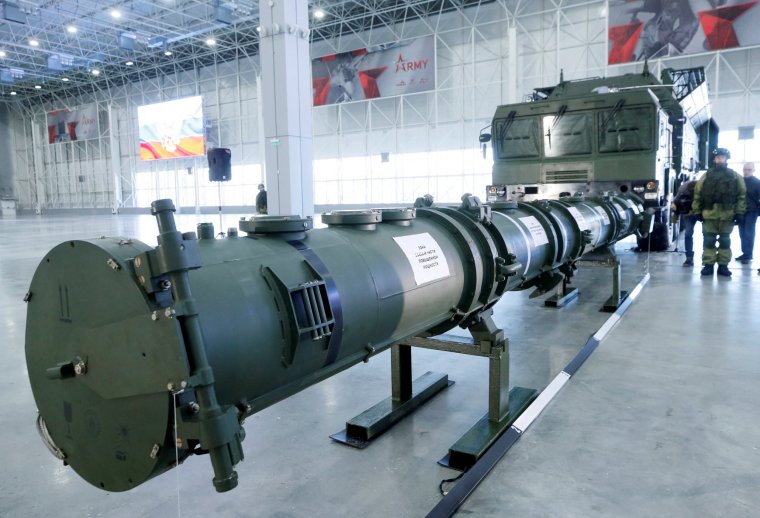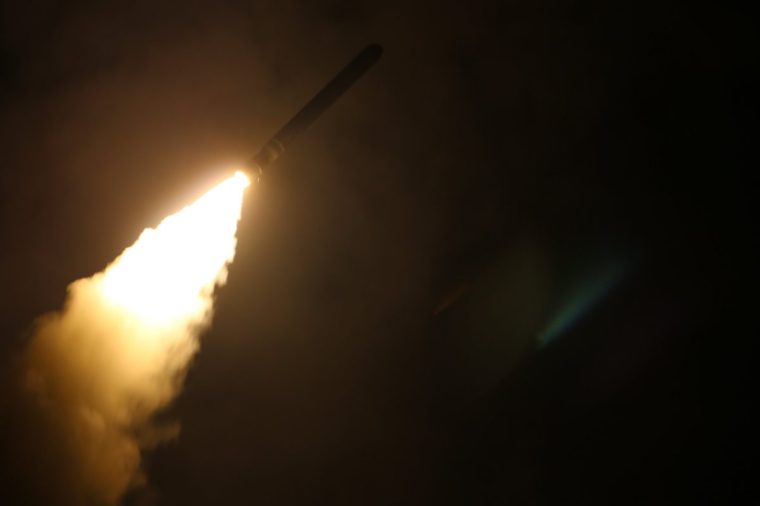Russia’s 9M729 cruise missile could pose a major threat to European security, experts told The i Paper
Ukraine has accused Russia of firing cruise missiles banned under a historic treaty with the US, with experts claiming the weapon could pose a wider nuclear threat to European security.
Officials in Ukraine said that Russia has fired 9M729 missiles 23 times at targets in Ukraine since August. Kyiv said it also recorded two launches of the weapon by Russia in 2022.
If true, it would be the first confirmed use of the ground-launched missile in combat in Ukraine or anywhere else in the world.
Analysts told The i Paper that the missile, which can be fitted with a nuclear warhead, has been the subject of controversy for years given its impressive range, to the point where Donald Trump exited a treaty banning its use.
What is the 9M729 missile?
Keir Giles, a Russia expert at Chatham House and the author of Who Will Defend Europe?, said the 9M729 has been developed over several decades in secrecy by Russia.
“The missile stems from the very early days of [President Vladimir] Putin’s reign, when he decided that Russia needed to be ready to fight and started putting in place all of the components that were essential to do so,” he told The i Paper.
“It is part of Russia’s long-time programme of developing ways of delivering damage at ranges that are longer than their European counterparts,” he added.
The Centre for Strategic and International Studies in Washington, DC, claims the 9M729 has a range of 2,500km.
In contrast, US-made Tomahawk missiles have a range of between 1,250km and 2,500km.

Trump pulled out of arms control treaty
The Intermediate-Range Nuclear Forces (INF) treaty between the US and Russia, dating back to 1987, banned ground-launched missiles with a range of between 500km and 5,500km due to their launchers being mobile and relatively easy to conceal.
In 2019, during Trump’s first term, the US quit the treaty as a direct result of the 9M729. Washington said the missile was in breach of the treaty and could fly far beyond its limit of 500km, something Russia denied at the time.
Russian deputy foreign minister Sergei Ryabkov said in 2018 that the 9M729 had not been developed or tested for a range exceeding 500km.
But Giles said that “this is a missile that Russia developed over a couple of decades in contradiction of the INF treaty and this was a widely known fact. The United States was keen to try to preserve arms controlled treaties and in effect turned a blind eye to what Russia was doing until eventually they had to pull out.”
He added that Russia had stepped away from arms control years before the actual negation of the treaty.
Even so, after the US withdrew from the treaty, Russia declared a moratorium on deploying intermediate-range missiles.
What threat does it pose to Europe?
Ukraine’s foreign ministry did not provide details or dates of the claimed 9M729 strikes. A senior official told Reuters they began on 21 August, less than a week after the Trump-Putin summit in Alaska.
A military source told Reuters that a 9M729 fired by Russia on 5 October flew over 1,200km before it impacted in Ukraine.
Meanwhile, Jeffrey Lewis, a distinguished scholar of global security at Middlebury College, said images from a Russian strike on the Ukrainian village of Lapaiivka on 5 October, over 600km from Russian territory, appeared to show debris consistent with what a 9M729 missile would look like.
John Foreman, a former British defence attaché to Moscow and Kyiv, said that: “If it’s shown that Russia’s using INF-range missiles, which could easily be nuclear, in Ukraine, then that is an issue for European security, not just Ukraine.”
On 4 August, Russia said it would no longer limit where it deploys INF-range missiles that can carry nuclear warheads.

How does the missile affect the Ukraine war?
Ukrainian President Volodymyr Zelensky travelled to the White House earlier this month in part to try to convince Donald Trump to supply Ukraine with Tomahawk missiles.
Tomahawks were not banned under the INF because they were only sea-launched at the time. Russia has said supplying Ukraine with such missiles would be a dangerous escalation in the conflict.
“All this excitement about Tomahawks for Ukraine – not that there is a real possibility of such a deal happening – is that it would give Ukraine a similar capability of striking military targets far beyond their current range,” said Giles.
Giles said that the 9M729 has been part of Russia’s regular threats against neighbouring territories, thanks to its ability to attack from safer locations deep inside Russia.
“The 9M729 missile has been a constant for at least a decade in Russia’s concept of deterrence,” he said.
Still, any confirmation of its actual usage would ratchet up tensions.
Ukraine’s foreign minister, Andrii Sybiha, said Kyiv supported Trump’s peace proposals and that boosting Ukraine’s long-range firepower would help persuade Moscow to end its war in Ukraine.
“Russia’s use of the INF-banned 9M729 against Ukraine in the past months demonstrates Putin’s disrespect to the United States and President Trump’s diplomatic efforts to end Russia’s war against Ukraine,” he said.
The White House did not respond to questions from Reuters about the 9M729, while Kremlin spokesperson Dmitry Peskov referred journalists to the Russian defence ministry when asked about reports that Russia had fired 9M729 missiles at Ukraine.
Foreman, the former British defence attaché, said the threat from the missiles should urge further regulation on such weapons by Nato.
“The fact that we now have no arms treaty on intermediary nuclear forces means there is a risk of nuclear escalation, which could in turn trigger a global nuclear exchange between the USA and Russia,” he told The i Paper.
He added: “After the invasion of Ukraine, the denial of this INF treaty is probably the most destabilising thing in European security.”
